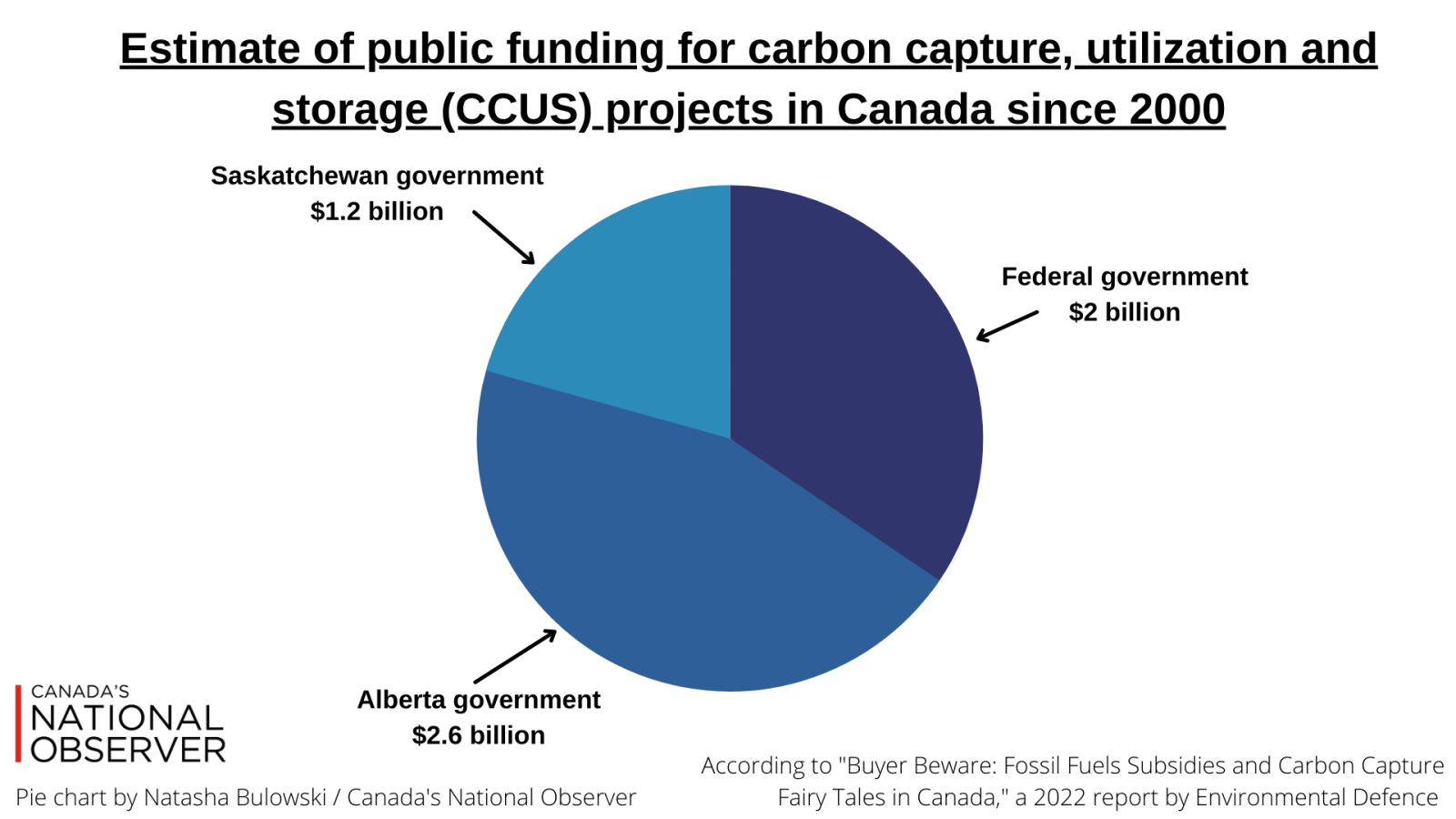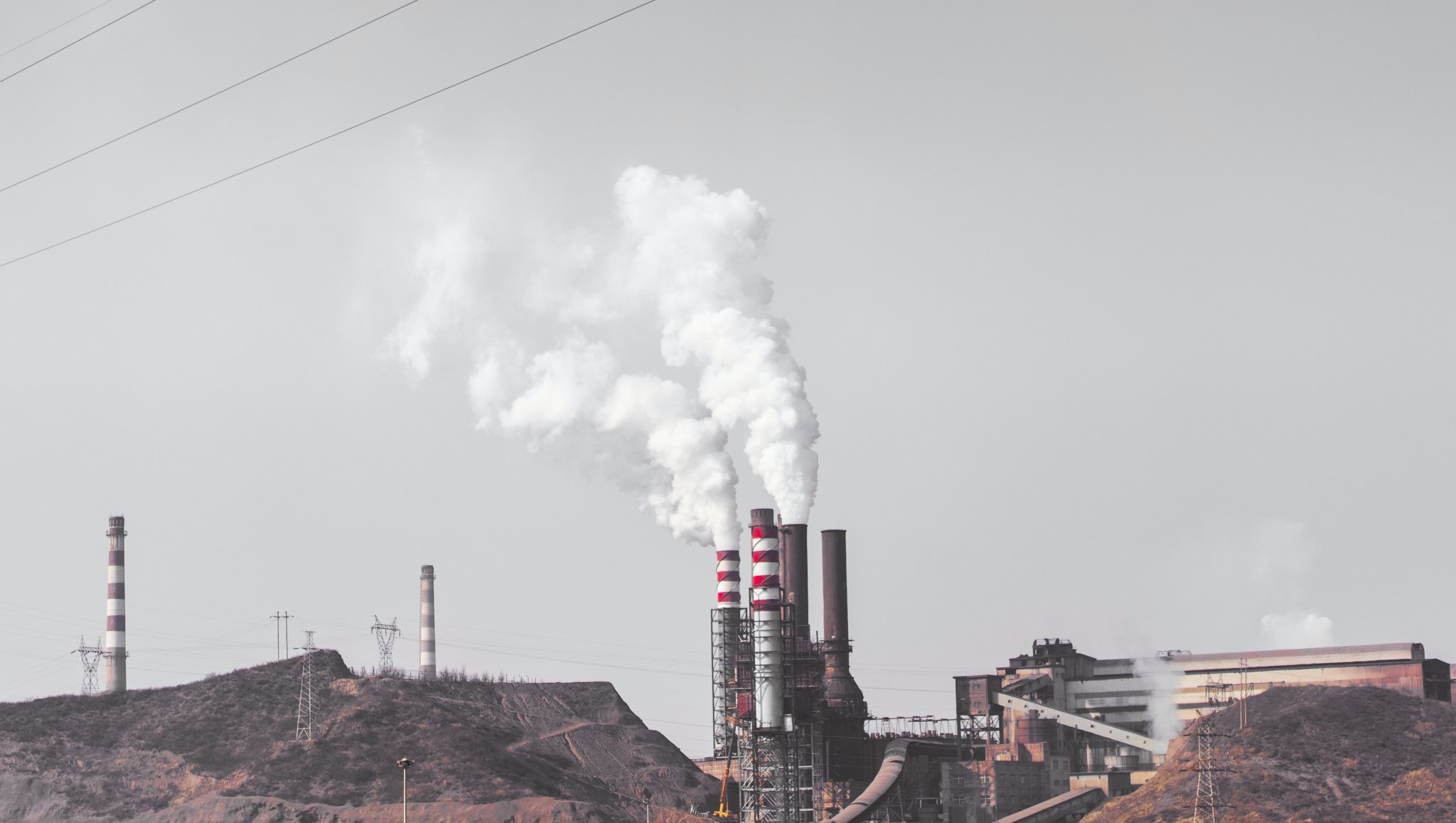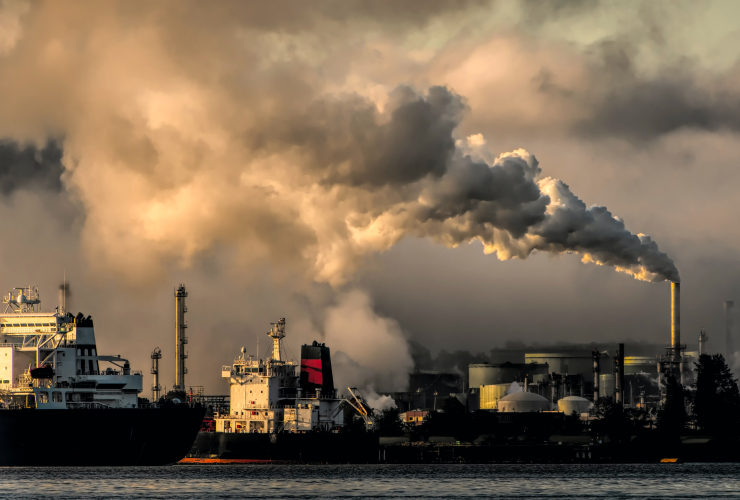Canada’s new climate plan is banking on carbon capture to cut nearly 13 per cent of the oil and gas sector’s projected greenhouse gas emissions by 2030. But a new report reveals billions of public dollars already spent on the technology aren’t yielding substantial reductions.
“It's not at all realistic,” said Julia Levin, senior program manager at Environmental Defence and author of the report. “Globally, this is not a new technology. This is technology that's been around for 30 years, (with) billions of dollars going into (it) and we're still only capturing less than 40 megatonnes … that's 0.001 per cent of our global emissions.”
Carbon capture utilization and storage (CCUS) projects only capture 0.05 per cent of Canada’s greenhouse gas emissions, or around 3.55 million tonnes of carbon per year, according to the new report, published March 31 by Environmental Defence.
The report provides the first estimate of public funding for CCUS projects in Canada. It found federal and provincial governments have provided approximately $5.8 billion since 2000, and this number stands to grow in the soon-to-be-announced federal budget.

Just last fall, Natural Resources Minister Jonathan Wilkinson told The Canadian Press that "at this stage in Canada, CCS technology has not reached the level of commercial maturity nor cost maturity that is likely going to be a solution before 2030." At the time he noted it will play a role in Canada's emissions reductions, but it's not a solution for everything, and would only be supported if it captures all emissions.
Levin says the government's projection that CCUS will reduce the oil and gas sector's emissions by nearly 13 per cent by 2030 is unrealistic given the high cost of the technology and meagre emissions reductions it yields. The climate plan includes the federal government’s proposed investment tax credit for CCUS, which will be designed to reduce emissions by at least 15 million tonnes per year, with more details appearing in the April 7 federal budget.
In a statement to Canada's National Observer, Wilkinson's spokesperson Ian Cameron clarified that the minister "has always been clear that CCUS is an important part of a broader climate plan – a position that is supported by reports from the International Energy Agency, the Intergovernmental Panel on Climate Change, and the Canadian Institute for Climate Choices."
More than 400 academics, 500 organizations and 30,000 Canadians oppose the proposed tax credit and warn it will lock in oil and gas production and amount to a new fossil fuel subsidy.
Bloc Québécois, NDP and Green politicians are also critical of the proposed tax credit and new climate plan.
CCUS involves trapping carbon dioxide released during industrial processes to prevent it from being emitted into the atmosphere, where it contributes to global warming. Once captured, carbon dioxide can be stored indefinitely underground or transported through pipes for different industrial uses — most often to extract more oil.
This is the case with 70 per cent of captured carbon in Canada, resulting in increased oil production, the report says. Opponents of the tax credit stress that even if emissions from the production and refining of oil could be brought to zero, 80 per cent of the oil and gas sector’s pollution comes when its product is ultimately burned, and there is still no way to trap the carbon that comes out of a tailpipe.
The report also notes carbon capture rates aren’t always what they seem. Shell’s Alberta-based Quest CCUS project has a capture rate of 80 per cent, but a recent report by Global Witness found the facility — which produces blue hydrogen — actually emits more carbon than it captures. It found only 48 per cent of the plant’s carbon emissions are captured, with that number falling to 39 per cent when other greenhouse gas emissions from Shell’s project are included.
The emissions reduction plan also says 10 per cent of the oil and gas sector’s reductions will come from hydrogen, which means we’ll have to rely even more on carbon capture, said Levin.
This is because Canada's hydrogen strategy centres on blue hydrogen, which is produced from natural gas with carbon capture, as opposed to green hydrogen, which is made with renewable electricity, or grey hydrogen, which is made from natural gas with no carbon capture. A meeting note obtained by Canada’s National Observer through a federal access-to-information request revealed the Liberal government intends to use existing infrastructure and grey hydrogen production to “kick-start Canada’s hydrogen economy” in the short term.
This is why over 400 academics wrote to Finance Minister Chrystia Freeland urging her to scrap the proposed CCUS tax credit or at least limit it to sectors with no decarbonization options, such as cement, and exclude any fossil fuel, plastics or petrochemical production.
“For Canada to ignore what the science is saying and double down on a risky technology is gambling with all of our lives,” said Levin.
Between 2018 and 2020, Canada provided 14 times more public finance to fossil fuels than renewables, according to a 2021 study by Oil Change International and Friends of the Earth U.S.
“At a time when the oil and gas industry is flush with cash, if they want to take bets that they can meet their mission targets with CCS, let them pay for it,” said Levin, also noting the emissions reduction plan urges the sector to use its profits to reduce emissions. “But we should definitely not be using taxpayer dollars and we also shouldn't be baking it into our climate plans.”
The federal government’s promised cap on oil and gas emissions is still being discussed, but Levin says it needs to be “way more ambitious” than the 31 per cent reduction under 2005 levels by 2030 outlined in the emissions reduction plan.
“Then, oil and gas companies can figure out how to reach that target. If they can't do it through CCS, then they're going to have to ramp down production,” she said. “And we know that's what needs to happen.”
— With files from John Woodside
— With files from The Canadian Press
Natasha Bulowski / Local Journalism Initiative / Canada’s National Observer
Updates and corrections
| Corrections policyThis story has been updated to include a statement from Ian Cameron, Jonathan Wilkinson's spokesperson, to clarify Wilkinson's current stance on carbon capture utilization and storage (CCUS). It was updated a second time to further clarify the federal government's longstnading commitment to the role of carbon capture utilization and storage technology in emissions reductions.
The Liberals' bet on CCS is
The Liberals' bet on CCS is an excellent method to shovel billions of public dollars into the pockets of largely foreign-owned corporations setting record profits.
In that light, the fact that CCS captures a small fraction of emissions at high expense — with huge opportunity costs — is a minor flaw.
Neoliberalism at its finest.
“At a time when the oil and
“At a time when the oil and gas industry is flush with cash, if they want to take bets that they can meet their mission targets with CCS, let them pay for it,”. Exactly! I wish I could opt out of this greenwashed fossil subsidy when I fill out my federal income tax return! If global CO2e emissions are to reach zero (use "net-zero" if you wish, but specify the negative emissions technologies and amounts) by 2050, it is not only the production emissions of the fossil fuel sector that must fall 40% by 2030, but the total, including end use (roughly 80% of the total). The only way to reduce total fossil-fuel total emissions 40% by 2030 is to reduce production by that amount. Period! To add insult to injury, the feds have added CCUS to the list of "green" technologies eligible for low interest financing in their recently announced Green Bonds Framework.
If this is the science, and
If this is the science, and from past reading and research, I believe it is......then throwing tax dollars at carbon capture and storage......so that oil production can continue to rise.......is a recipe for climate disaster.
Carbon capture may form a part of our future mitigation efforts.....since the amount of CO2 in the atmosphere is already dangerously high.....and given its long shelf life......needs to be reduced in the short term to prevent the positive feedback loops of continued global warming from moving us to a place we can't retreat from. It should play absolute no part in allowing fossil fuel extraction to continue, or worse case scenario, ramp up.
The science isn't difficult, its unforgiving. Life on earth as we know it has no future if we continue producing CO2 and other greenhouse gases while pretending we can mitigate the rise by subsidies to the very industries that have brought us the present danger.
Carbon capture is a non starter. Right up there with the fantasy of filling the earth with small nuclear reactors, all of which produce radioactive waste with half life's over 200o years. If these pipe dreams are the best our government can do, to move us past the Age of Fossil Fools, we're likely done for.
Let's do what we can to see none of our public money goes into these black money pits....they represent a continuation of the problem, and aren't any part of the solution. Green technologies are here, growing cheaper by the year, and can be installed everywhere. NOW.
Visualize Industrial Collapse; Work toward Distributed Green Energy; Consume Less; Give back More.
And just maybe, listen to our indigenous people. They managed to live on this land for well over 12,000 years...without destroying land and water....perhaps they could set up some schools to take the exploiter out of us, and teach us respect for all our brothers and sisters.
That would be realistic future planning....and might lead to some restoration of forests, lakes, rivers and our oceans, all presently on the verge of collapse.
On another recent NO piece I
On another recent NO piece I tried to work out some of the costs of CCUS, given that cars and trucks alone emit 140,000,000 tonnes of CO2 annually (2015 data). It's very painful to see our governments and political parties so captured by the fossil fuel industry that they will try to give this expensive tech a financial break, like trying to fill in the Grand Canyon with a toy shovel.
I do agree that CCUS is better directed at cement and steel, where applicable, noting that Canadian steelmaking is already shifting to electricity from coal in some enlightened quarters.
And, as usual, not a peep about the hundreds of millions of tonnes CO2 that can be captured and sequestered every year by large-scale regenerative agriculture and forestry, with much better yields and lower operating costs. And powered by free sunlight too.
https://www.nationalobserver.com/2022/03/30/opinion/alberta-oil-and-gas-...
The bitter truth is:
The bitter truth is:
Canada is a net exporter of fossil fuels, earning us big money. The more we transition the more we lose in the short and medium term. It is easier for other countries to transition because they are net importers of fossil fuels. The faster they transition the more they save.
No matter what flavour of government is in power, the underlying Canadian strategy seems to be as follows:
Regardless of our climate action plans, we will be one of the last ones on the planet to transition away from a source that brings us big earnings. Hopefully, renewables will be a lot cheaper by the time we are really ready to transition full steam (in the 2040s). Until then we will let others spend money to scale renewables and make clean technologies cheaper for us in the process. We have done our share of investing in the first energy revolution (billions in fossil fuels infrastructure). Now we will let Europe and Asia do the bidding for the next energy revolution (renewables and storage).
Please define "big earnings."
Please define "big earnings."
When the economy is ripping and the world price of oil is in a sweet spot (not too cheap to cause a recession, not so expensive to dampen demand and cause another recession), the entire national fossil fuel industry comprises just 8% of the national GDP. So, what about the remaining 92+%? Does that not count?
If we were Russia, the pre-war oil wealth would have climbed to 50% of the economy. Thank our stars we are not foolish enough to be sucked in by 18th Century extractive models to that extent. But even 8% is very problematic with respect to industry influence over governments and public opinion. Canada's economy is as big as Russia's but is far, far more diversified and efficient, and that is with just a little more than 1/4 of the population.
A single metropolitan area (Greater Toronto) generates wealth roughly equivalent to the entire province of Alberta, oil and all, in a good year. ~$340B. Canada's six largest cities create half of the nation's wealth. Before the pandemic BC's tech and knowledge sector grew to outweigh its oil and gas, forestry, mining, agriculture and fisheries combined in terms of employment and financial contributions to the provincial GDP. And Metro Vancouver where most of the tech is located made up half of the GDP of the entire province.
So, let's not be persuaded by false economic narratives about the "strength" of the oil industry and thus give fossil fuel interests excuses to continue with the status quo for yet another 30 years on top of the last 34 since climate change was first officially acknowledged. We have already arrived at 420 parts per million atmospheric CO2 and 1.2 degrees average temperature increase, and look what's happening at the poles, in Canadian forests, with glaciers and extreme weather events all over.
Being dependent on carbon was planned. We can plan our way out of our dependency a lot quicker and with not as much pain as you imply, given the already available, fast growing alternatives and the mushrooming worldwide critical mass crystalizing to decarbonize and electrify.
Further, by 2025 all the
Further, by 2025 all the major car makers will be pumping out millions of EVs every year. Several models in development are being designed to be $30K or less, at par with our combustion cars. EVs have the advantage of very low life span operating costs. New lower cost and more efficient battery tech is racing toward commercialization and are giving EVs very long ranges between charges.
Suburban cars and trucks emit about 150 million tonnes of CO2 every year in Canada. Suburban cars and trucks are also the very sector targeted by nearly a trillion bucks in international investment to retool car plants all over the world for electrics. This is also the sector that is the primary current consumer of Canadian oil products.
So let's connect the dots. There is a reason why Canada's Corporate Knights publication ranks Denmark's Vestas Wind Power as number one in Environmental, Social and Governance (ESG) investment portfolios out of 100 companies.
Article: "Carbon capture
Article: "Carbon capture utilization and storage (CCUS) projects only capture 0.05 per cent of Canada’s greenhouse gas emissions, or around 3.55 million tonnes of carbon per year."
One too many zeroes.
3.55 Mt / 730 Mt = 0.5%
0.486% to be more precise.
But precision here is meaningless. The denominator is fiction. Canada grossly under-reports its O&G emissions of all types.






Comments